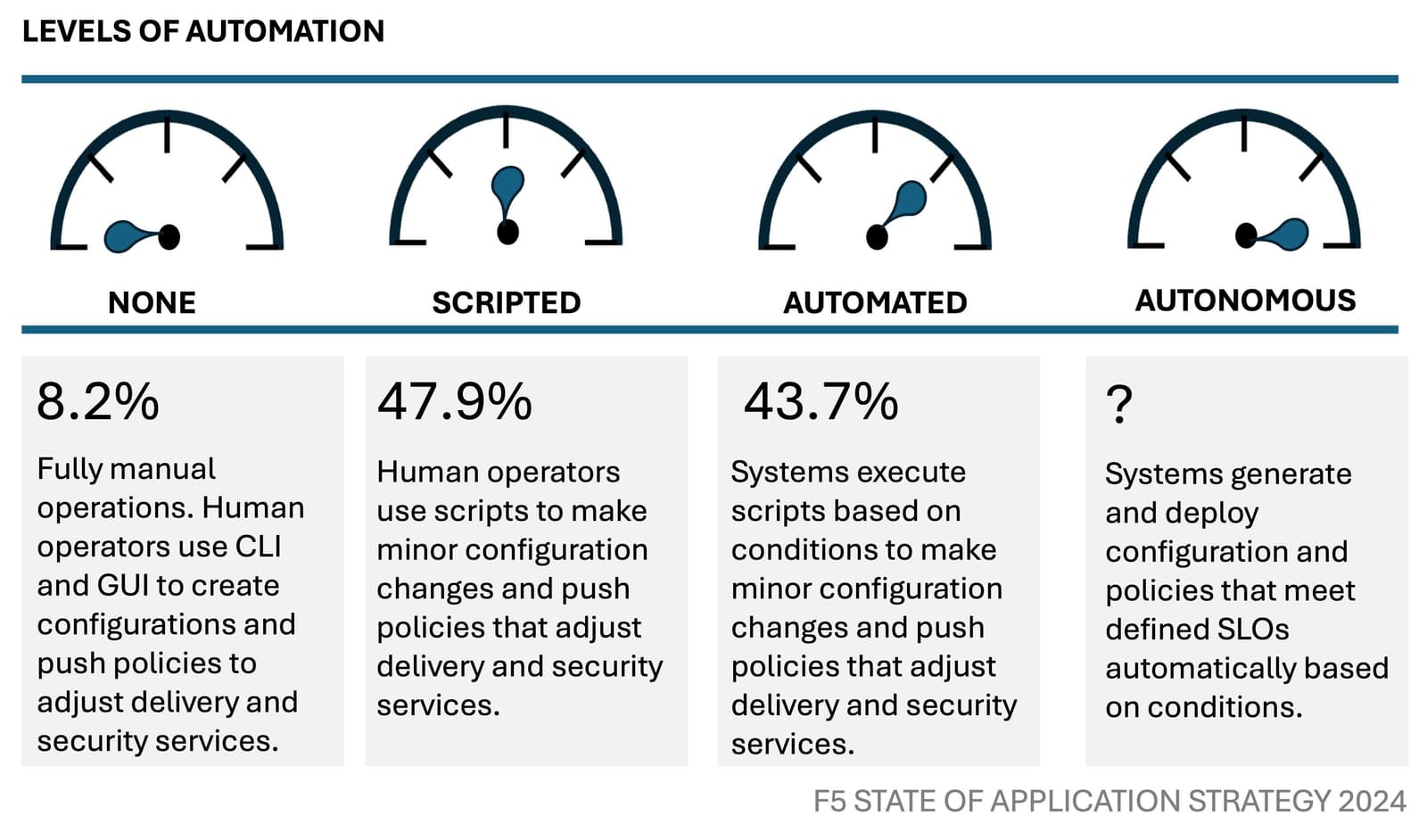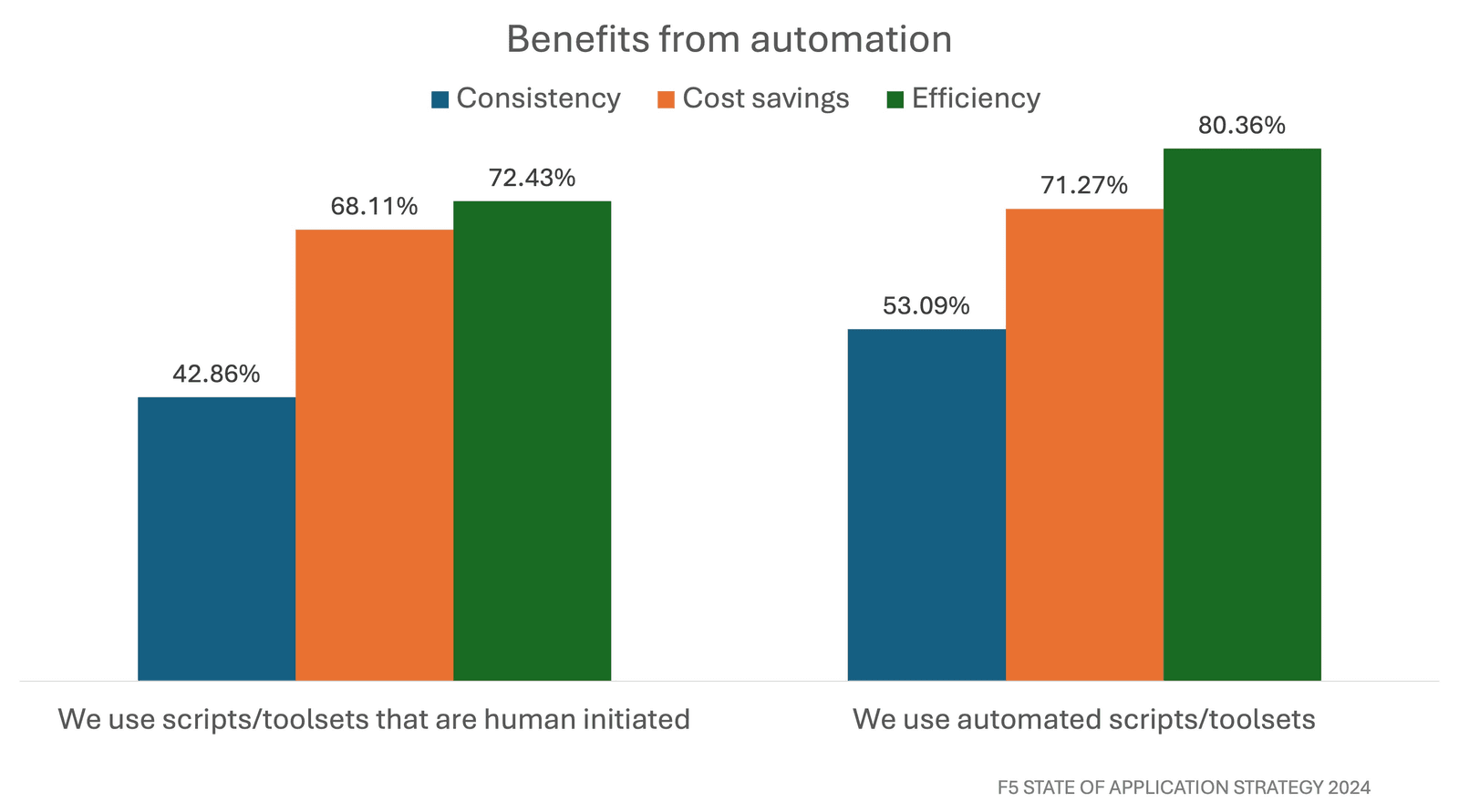In the past, the most digitally mature organizations used automation to execute scripts based on well-defined business and operational objectives to make configuration changes and push adjustments to policies. The introduction of generative AI has made that nearly passé, with the new goal now a more autonomous system.
That’s the conclusion I draw based on some recent reading of Intel’s State of Cloud Optimization 2024 in which “60% of those surveyed consider an autonomous nature in optimization tools to be very important to extremely important.”
If you’re wondering what optimization tools are, well, those are related to costs and, more specifically, reaching the top priority for 2024 of “cutting cloud costs.”
FinOps, basically.
But autonomy is not just about cutting costs in the cloud. It’s also about eliminating operational toil and leveraging the power of generative AI to autonomously execute delivery optimization and security, too.
When asked about the greatest value respondents were looking for from generative AI, the top answer for both app security and delivery uses was autonomous adjustments.
- Security: automatically adjust security policies and generate security configurations on threats detected
- Delivery: automatically adjust app and API policies based on service-level objectives (SLOs) for delivery optimization
In other words, enterprises are looking to generative AI to up the ante for automation strategies from automated scripts to autonomous adjustment and generation of policies to manage security, performance, and cost-control objectives.
The State of Automation
More autonomous operations may sound a bit futuristic and unachievable, but existing levels of automation across enterprises are actually fairly impressive. That’s doubly true when you consider where organizations were in their automation journey last year.
Near the end of 2022, the majority (52.5%) of organizations were still operating under hybrid automation strategies. They used scripts to make configuration changes and push policies, but they executed those scripts manually. Only about a quarter (25.4%) were using systems to initiate scripts, and a whopping 21.9% were not using any automation at all.
Fast forward to the end of 2023 and most organizations have made incredible progress on their automation journey.

This year, less than one in ten (8.2%) were ignoring automation and the percentage of organizations that are achieving what was the highest maturity (automated), had nearly doubled.
But you’ll note my handy-dandy chart has a new goal: autonomous.
And that’s because generative AI showed up and pointed out that the goal of fully autonomous operations was not only possible but achievable. That’s because generative AI may hallucinate when asked open-ended questions, but when focused in on generating structured content—like configurations and code with well-formed schemas and syntax specifications—it performs well. And the more it does, the better it gets. It learns, after a fashion, and can become as proficient at generating the right policies and configurations to tune infrastructure and app services to meet defined service-level objectives.
And, based on our research, organizations want to achieve it. Likely because the benefits organizations are seeing from their automation efforts are greater when automation is more fully leveraged.

But all this automation must be driven by something. Something concrete. Something measurable. Something actionable.
That something is data. Telemetry, to be specific, generated by the systems and services that support the applications and APIs organizations want to ensure are fast, available, and secure.
That’s why when we talk about the six key technical capabilities organizations need to accelerate digital transformation, automation and observability go together into a single domain. Because the former without the latter is just guessing, and the latter without the former fails to take advantage of realizing the visibility organizations have desired for decades.
And all that data, all that telemetry, can also fuel the predictive AI engines that will analyze it and produce actionable insights so generative AI can use it to adjust configurations and policies autonomously.
Oh yeah. It’s all coming together now. AIOps is the next evolution of automation, and it’s all thanks to generative AI.
About the Author

Related Blog Posts

Multicloud chaos ends at the Equinix Edge with F5 Distributed Cloud CE
Simplify multicloud security with Equinix and F5 Distributed Cloud CE. Centralize your perimeter, reduce costs, and enhance performance with edge-driven WAAP.
At the Intersection of Operational Data and Generative AI
Help your organization understand the impact of generative AI (GenAI) on its operational data practices, and learn how to better align GenAI technology adoption timelines with existing budgets, practices, and cultures.
Using AI for IT Automation Security
Learn how artificial intelligence and machine learning aid in mitigating cybersecurity threats to your IT automation processes.
Most Exciting Tech Trend in 2022: IT/OT Convergence
The line between operation and digital systems continues to blur as homes and businesses increase their reliance on connected devices, accelerating the convergence of IT and OT. While this trend of integration brings excitement, it also presents its own challenges and concerns to be considered.
Adaptive Applications are Data-Driven
There's a big difference between knowing something's wrong and knowing what to do about it. Only after monitoring the right elements can we discern the health of a user experience, deriving from the analysis of those measurements the relationships and patterns that can be inferred. Ultimately, the automation that will give rise to truly adaptive applications is based on measurements and our understanding of them.
Inserting App Services into Shifting App Architectures
Application architectures have evolved several times since the early days of computing, and it is no longer optimal to rely solely on a single, known data path to insert application services. Furthermore, because many of the emerging data paths are not as suitable for a proxy-based platform, we must look to the other potential points of insertion possible to scale and secure modern applications.
